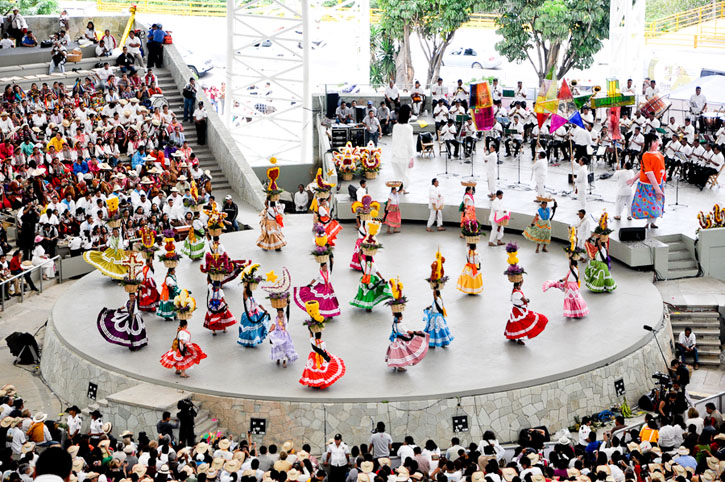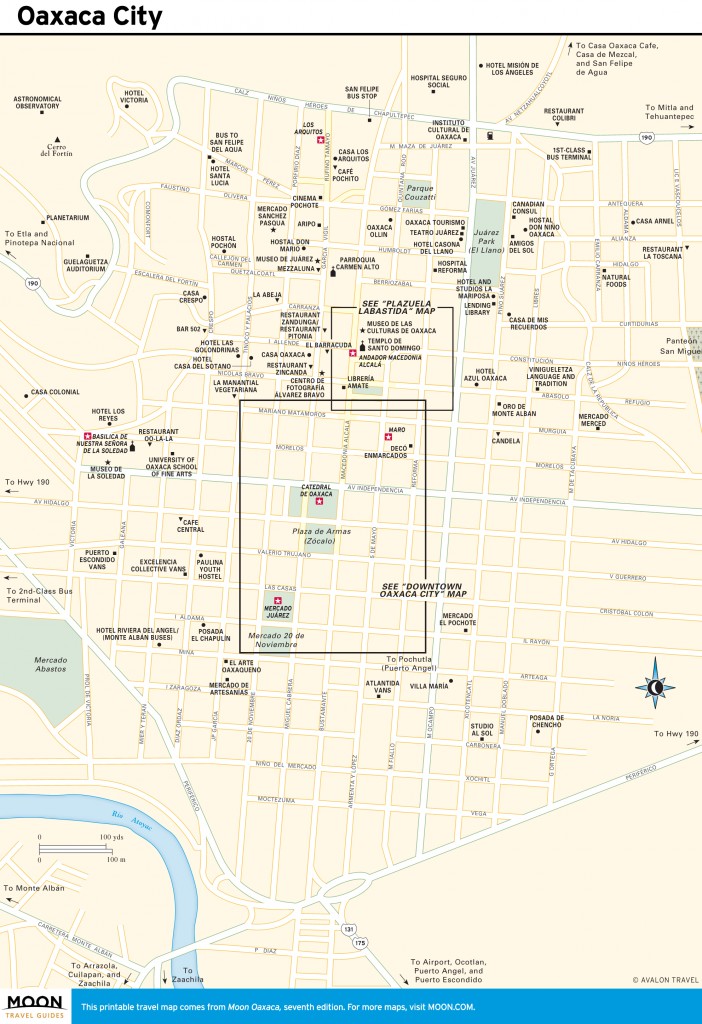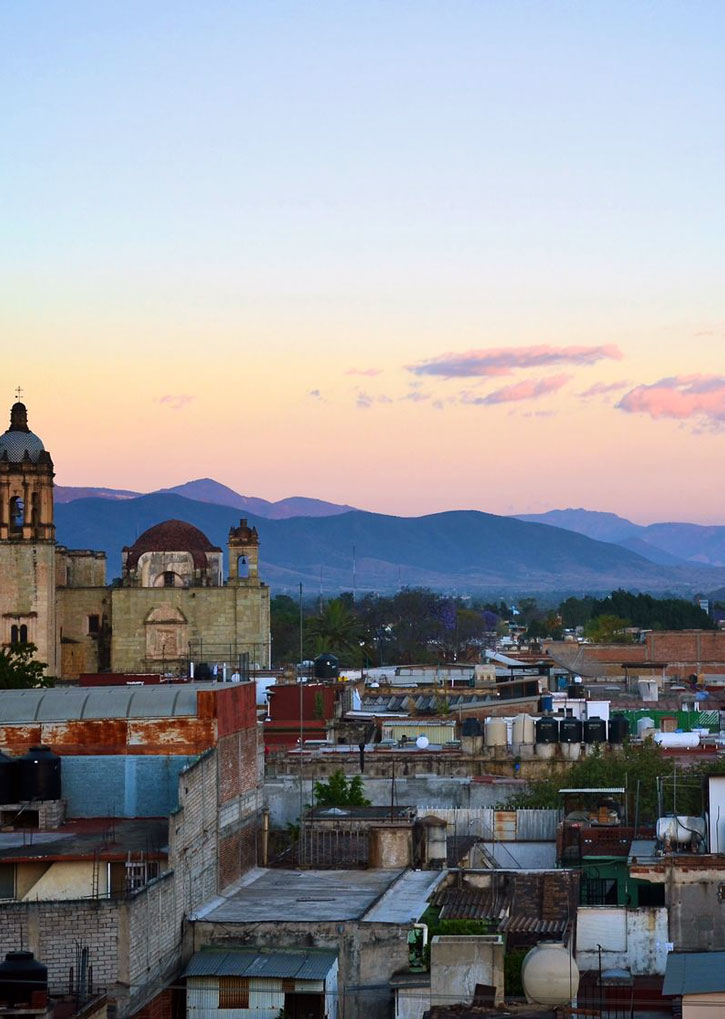
The Guelaguetza Festival brings together the indigenous peoples of Oaxaca. Photo © Eduardo Robles Pacheco, licensed Creative Commons Attribution.
The Guelaguetza, like virtually all of Oaxaca’s civic revelries, starts at the zócalo (central plaza), ringed by relaxing sidewalk cafés and bordered by the porticoed Palacio de Gobierno on its south side and the distinguished baroque bulk of the Catedral de Oaxaca on its north side.
With some exceptions, this north side of Oaxaca City is more welcoming and exciting to tourists and locals alike, with most of the better new restaurants, stores, and bars located “uptown,” along the pedestrian walkway known as the Andador Macedonio Alcalá (hereafter referred to as the Alcalá) and other streets such as Allende, García Vigil, and Bravo. There is plenty to do farther south, for that is where the city’s great traditional markets can be found, but uptown is where most of the younger Oaxacans like to spend their time.
From the zócalo, the city’s street grid spreads south past the town’s vibrant pair of central markets, the Mercado Juárez and the Mercado San Juan de Dios, and north, uphill, along the Alcalá. The walkway connects the zócalo with Oaxaca’s uptown monuments, most notably Oaxaca’s jewel, the Centro Cultural de Santo Domingo, made up of the Iglesia y Ex-Convento de Santo Domingo and the adjacent magnificent Museo de las Culturas de Oaxaca.

Oaxaca City
Where Andador Macedonio Alcalá meets the Centro Cultural, a lively street life has developed, with dozens of bars and restaurants, and a number of contemporary art galleries and stores selling fine crafts from all over the state, beautiful jewelry, mezcal from myriad individual distilleries, organic coffee, and clothes, especially high-end designer fashions. Many of the designers creating these clothes synthesize colorful Oaxacan fabric and textile traditions with contemporary urban style. For those looking for a hip and lively mix of old and new Oaxaca—call it Oaxacan fusion—this is ground zero.
To the west, the city streets climb even more steeply, and as the Guelaguetza throng does in July, the westbound streets reach the grand outdoor dance stage and amphitheater atop Oaxaca’s storied hillside of Cerro del Fortín. This hill, originally known as the hill of Huaxyacac, was named for the forest of pod-bearing trees that still covers its slope. Huaxyacac was the city’s original name, which the Spanish transliterated as Oaxaca.
In about four fairly relaxed days, you can take in most of the downtown highlights. Start out with a leisurely day of people-watching and café-lounging around the old zócalo. Explore the nearby Palacio de Gobierno, the colorful Mercado Juarez, the baroque Templo y Ex-Convento de San Agustín, and the Catedral de Oaxaca.
Spend your second day in the multitude of shops along the Andador Macedonio Alcalá, at the Museo de Arte Contemporaneo, and in the Ex-Convento de Santa Catalina, now restored as the Hotel Camino Real. Be sure to enjoy lunch on the relaxing patios of the Danzantes or Hostería Alcalá restaurants. Or try one of the great new restaurants on Allende or García Vigil.

Looking out over Oaxaca city. Photo © Matt Trapp/123rf.
On day three, visit the Centro Cultural de Santo Domingo, which includes the world-class Museo de las Culturas de Oaxaca and the lovely Iglesia y Ex-Convento de Santo Domingo. Have a look at the adjacent botanical gardens while you’re upstairs.
Spend your fourth day following your own interests, such as investigating more handicrafts and retail stores, especially MARO (Mujeres Artesanías de las Regiones de Oaxaca) and the new contemporary clothing and textile stores along Cinco de Mayo; visiting small museums, notably, the Casa de Juárez and the Museo Arte Prehispánico de Rufino Tamayo; or taking in sights, such as the intimate Arquitos neighborhood or the gemlike Basilica de Nuestra Señora de la Soledad and adjacent museum, Museo de la Soledad. Alternately, visit some of the newer contemporary art galleries, such as the Galería 910 Arte Contemporaneo and Galería Linda Fernandez. There are at least a dozen of these galleries open now, and most of them are within two or three blocks of the junction of the Andador Macedonio Alcalá and the Centro Cultural. For the most part, they are showing art created by contemporary Oaxacan artists, and there are a number of artists whose work is worth seeing.
Excerpted from the Seventh Edition of Moon Oaxaca.